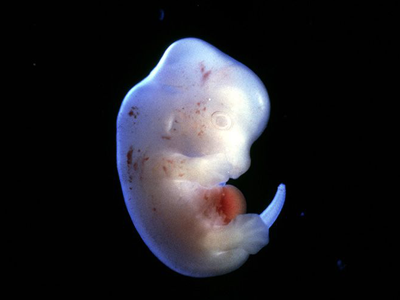
Breaking News
 Outrage Erupts as Released MS-13 Gang Member Kilmar Abrego Garcia...
Outrage Erupts as Released MS-13 Gang Member Kilmar Abrego Garcia...
 The backbone of U.S. capital markets just got the green light to move $100 trillion onchain
The backbone of U.S. capital markets just got the green light to move $100 trillion onchain
 SILVER IS ENTERING A "GENERATIONAL" SQUEEZE.
SILVER IS ENTERING A "GENERATIONAL" SQUEEZE.
Top Tech News
 EngineAI T800: Born to Disrupt! #EngineAI #robotics #newtechnology #newproduct
EngineAI T800: Born to Disrupt! #EngineAI #robotics #newtechnology #newproduct
 This Silicon Anode Breakthrough Could Mark A Turning Point For EV Batteries [Update]
This Silicon Anode Breakthrough Could Mark A Turning Point For EV Batteries [Update]
 Travel gadget promises to dry and iron your clothes – totally hands-free
Travel gadget promises to dry and iron your clothes – totally hands-free
 Perfect Aircrete, Kitchen Ingredients.
Perfect Aircrete, Kitchen Ingredients.
 Futuristic pixel-raising display lets you feel what's onscreen
Futuristic pixel-raising display lets you feel what's onscreen
 Cutting-Edge Facility Generates Pure Water and Hydrogen Fuel from Seawater for Mere Pennies
Cutting-Edge Facility Generates Pure Water and Hydrogen Fuel from Seawater for Mere Pennies
 This tiny dev board is packed with features for ambitious makers
This tiny dev board is packed with features for ambitious makers
 Scientists Discover Gel to Regrow Tooth Enamel
Scientists Discover Gel to Regrow Tooth Enamel
 Vitamin C and Dandelion Root Killing Cancer Cells -- as Former CDC Director Calls for COVID-19...
Vitamin C and Dandelion Root Killing Cancer Cells -- as Former CDC Director Calls for COVID-19...
 Galactic Brain: US firm plans space-based data centers, power grid to challenge China
Galactic Brain: US firm plans space-based data centers, power grid to challenge China
Scientists Succeed in Growing Human-Monkey Embryos

The embryos, which were derived from a macaque and then injected with human stem cells in the lab, were allowed to grow for 20 days before being destroyed.
We have a term for this type of life form: a chimera, named after the fire-breathing monster of Greek mythology that was part lion, part goat and part snake. It's hoped that part-human chimeras—essentially animal bodies with some human organs or other characteristics—might one day offer clues to help us treat human diseases, as well as providing organs to transplant to humans. But for these purposes, part-human chimeras will first have to be born, and this research takes us one step closer to that eventuality.
That's ethically controversial, because these creatures could possess an ambiguous moral status: somewhere between that of humans, which we don't tend to experiment upon, and animals, which we do. How we end up treating part-human chimeras will depend upon the moral status we assign them—a task that these latest embryonic experiments only makes more pressing.
Why make chimeras?
There are several rationales for pursuing this line of research. Human-monkey chimeras could be created to study parts of the brain, for instance, so we can better understand Alzheimer's disease. Another goal is to grow human organs for transplantation by "deleting" the relevant organ from the animal's genetic instructions, and replacing it with human stem cells to fill the developmental niche.

 This is not a bubble.
This is not a bubble.


